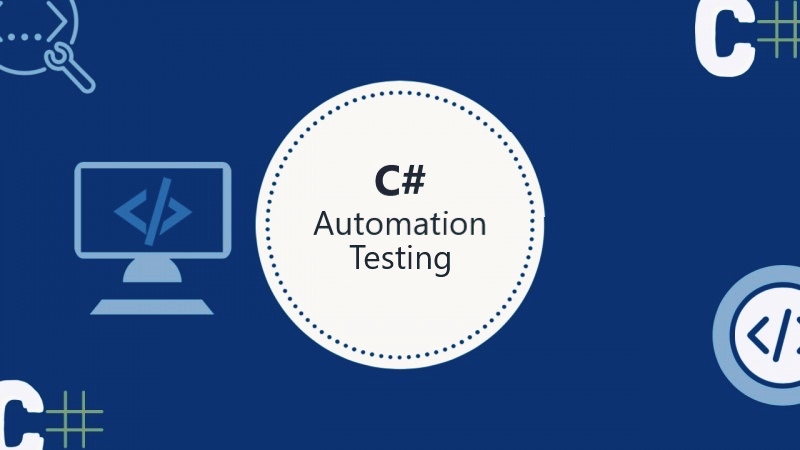
The Importance of Implementing Automated Tests in C# Projects
In the world of software development, the quality and reliability of your code are paramount. One of the most effective ways to ensure that your C# projects meet high standards is through automated testing. This article will explore why automated tests are essential, how they improve the development process, and best practices for implementing them in your C# projects.
1. Why Automated Testing?
Automated testing allows developers to validate the functionality of their code quickly and efficiently. Unlike manual testing, automated tests can be run frequently without consuming significant time or resources. This means that as your project grows, you can ensure that new changes don’t break existing functionality.
Key Benefits:
2. Types of Automated Tests in C#
There are several types of automated tests that can be implemented in C# projects, each serving a different purpose:
using NUnit.Framework;
public class CalculatorTests
{
[Test]
public void Add_TwoNumbers_ReturnsSum()
{
var calculator = new Calculator();
var result = calculator.Add(2, 3);
Assert.AreEqual(5, result);
}
}
public class Calculator
{
public int Add(int a, int b)
{
return a + b;
}
}
This example demonstrates a simple unit test for an Add method in a Calculator class.
Example:
using NUnit.Framework;
using Moq;
public class OrderServiceTests
{
[Test]
public void ProcessOrder_ValidOrder_StoresOrderInDatabase()
{
var mockRepository = new Mock<IOrderRepository>();
var orderService = new OrderService(mockRepository.Object);
var order = new Order { Id = 1, ProductName = "Laptop", Quantity = 1 };
orderService.ProcessOrder(order);
mockRepository.Verify(repo => repo.Save(order), Times.Once);
}
}
public interface IOrderRepository
{
void Save(Order order);
}
public class OrderService
{
private readonly IOrderRepository _orderRepository;
public OrderService(IOrderRepository orderRepository)
{
_orderRepository = orderRepository;
}
public void ProcessOrder(Order order)
{
// Some business logic here
_orderRepository.Save(order);
}
}
public class Order
{
public int Id { get; set; }
public string ProductName { get; set; }
public int Quantity { get; set; }
}
This integration test verifies that the OrderService correctly interacts with the IOrderRepository to store an order.
Example:
using OpenQA.Selenium;
using OpenQA.Selenium.Chrome;
using NUnit.Framework;
public class LoginTests
{
private IWebDriver driver;
[SetUp]
public void SetUp()
{
driver = new ChromeDriver();
}
[Test]
public void Login_ValidCredentials_ShouldRedirectToDashboard()
{
driver.Navigate().GoToUrl("https://example.com/login");
var usernameField = driver.FindElement(By.Id("username"));
var passwordField = driver.FindElement(By.Id("password"));
var loginButton = driver.FindElement(By.Id("loginButton"));
usernameField.SendKeys("testuser");
passwordField.SendKeys("password123");
loginButton.Click();
Assert.AreEqual("https://example.com/dashboard", driver.Url);
}
[TearDown]
public void TearDown()
{
driver.Quit();
}
}
This end-to-end test simulates a user logging in with valid credentials and checks if they are redirected to the dashboard.
领英推荐
3. Best Practices for Implementing Automated Tests
To get the most out of automated testing, follow these best practices:
Example:
[TestFixture]
public class ShoppingCartTests
{
private ShoppingCart _cart;
[SetUp]
public void SetUp()
{
_cart = new ShoppingCart();
}
[Test]
public void AddItem_ShouldIncreaseItemCount()
{
_cart.AddItem("Apple", 1);
Assert.AreEqual(1, _cart.TotalItems);
}
}
public class ShoppingCart
{
private readonly List<string> _items = new List<string>();
public int TotalItems => _items.Count;
public void AddItem(string itemName, int quantity)
{
_items.Add(itemName);
}
}
This unit test for a shopping cart starts early in the development process, ensuring that the AddItem method works as intended.
Example:
[Test]
public void Multiply_TwoNumbers_ReturnsProduct()
{
var result = calculator.Multiply(2, 3);
Assert.AreEqual(6, result);
}
This test focuses on a single responsibility—validating the multiplication logic in isolation.
Example:
[Test]
public void CalculateDiscount_ValidAmount_ReturnsDiscountedPrice()
{
var price = 100;
var discount = calculator.CalculateDiscount(price, 10);
Assert.AreEqual(90, discount);
}
public class DiscountCalculator
{
public int CalculateDiscount(int price, int discountPercentage)
{
return price - (price * discountPercentage / 100);
}
}
TDD helps ensure that your code meets the requirements defined by the tests from the very beginning.
4. Tools and Frameworks
For C# developers, there are numerous tools available to facilitate automated testing:
5. Conclusion
Automated testing is not just a best practice; it is a necessity in modern software development. By integrating automated tests into your C# projects, you enhance the reliability, maintainability, and overall quality of your applications. Investing time in setting up a robust testing framework will pay dividends in the long run, reducing the number of bugs and allowing your team to focus on delivering new features with confidence.
Thanks for reading!
Software Development Engineer | FullStack Developer | Node.JS | React | Docker | Kubernetes
3 个月Thanks for sharing Lucas Wolff. The examples you've provided for different types of automated tests, like unit, integration, and end-to-end tests, offer practical guidance for implementation.
Lucas Wolff Absolutely agree! Implementing automated testing is really important for many software projects!
Software FrontEnd Engineer | React.js, Next.js, Node.js.
3 个月Very useful!
its very good! thanks for sharing!
Really nice post! It's always important to talk about tests and you put this importance really well on the post!